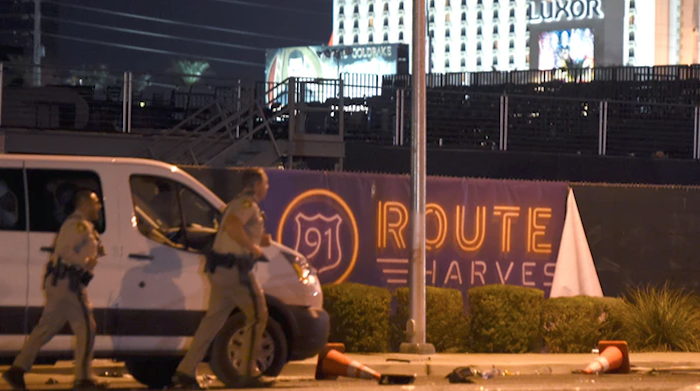Leading (with) Las Vegas

Another senseless act of violence and more lives are lost. In the last few months, it’s been Manchester, London, Barcelona and Marseilles.
This time it was Las Vegas. But this time it wasn’t international terrorism-related and along with gun control, the debate has been whether it should be considered domestic terrorism.
Regardless of the label we give it, it was another heartbreaking incident that drove the news cycle through the night and into the morning.
And rightly so. It’s a massive story that, with the aid of social media etc, has had an impact on many of us either directly or indirectly.
It’s also given rise to discussion on how we should cover it. When do we start to back off? When does audience fatigue kick in?
It’s sad that covering these types of events has become second nature. We know where to go for information or to get that bit of audio that will give more depth to the coverage.
Where formats tend towards short and snappy bulletins, we get more airtime. It’s what everyone was talking about. They wanted to know who could have been responsible, how it played out and were there any Australians among the victims.
The rulebook was thrown out the window as we try to reflect the magnitude of events in Las Vegas. But maybe we should add a few pages to that rulebook.
The Poynter Institute in the US is a non-profit school for journalism, aiming to be an instructor and resource for anyone ‘in the media’.
It has come up with a list of suggestions, for those covering an event like the Las Vegas massacre, that are worth considering.
Name the shooter infrequently and only when critical to helping the audience
Does naming him glorify the gunman? Does it give him the notoriety he was perhaps seeking? Perhaps.
In this case, the fact that the 64-year-old suspect was not your ‘stereotypical’ deranged or troubled killer certainly gave the story a different complexion.
Be both accurate and contextual
Sounds obvious. I’m sure we would all like to believe we’re being accurate with the information we put to air and use it in the right context.
But in light of the Boston Marathon bombing when Main Stream Media used information (wrong as it turned out) from so-called ‘citizen journalists’, it’s a reminder not to rush to get it to air, without checking or verifying it.
Don’t speculate on mental illness
Who didn’t think only a ‘crazy and deranged bastard would carry this out’? That’s a perfectly natural response to anything a horrific as a mass killing. And it’s fine to think it, but unless we know the specifics, don’t speculate.
Avoid images that glorify the killer
Perhaps not relevant to the radio side of operations, but definitely worth considering on the digital side of the fence. A picture does tell a thousand words.
Avoid superlatives in teasers and tweets that don’t have context
The unnecessary adjective is one of my pet hates and it’s becoming more prevalent on-air and on-screen. Just let the story tell itself.
It’s an horrific event and the media using every emotive description actually takes something away from it.
The suggestions made by Poynter are just that: suggestions. Most of us working within Australian media would find their ‘gut instinct’ is closely aligned with what Poynter has put forward.
But, it’s still worthy of consideration and discussion, especially with those who may be newer to the industry.
And now we can only hope we won’t have to put them into practise any time soon, but sadly that probably won’t be the case.


